Had a nice walk up the Burn of Lochy and one of its tributaries the Allt Iomadaigh (how do you pronounce this?) yesterday. The aim was to check out the sea trout spawning (I wasn’t disappointed) and to have a look at the habitat. I had only visited parts of these burns before to complete electrofishing survey sites so it was good to be able to spend a bit more time learning a little more about this part of the catchment.
The Burn of Lochy is a tributary of the Avon which it joins on the west bank just upsteam and opposite Tomintoul Distillery. The Allt Iomadaigh is the smaller of the two main tributarie; the other is the Burn of Brown but it is inaccessible due to a waterfall at the Bridge of Brown. I started my walk in the Iomadaigh but I’ll start this report in the Lochy and progress upstream.
As soon as I started walking up the Lochy the sea trout redds were apparent. There was an abundance of spawning gravel in the middle reaches of the Lochy, more so now after the big August spate, probably to the extent that the fish could be very choosy where they spawned.
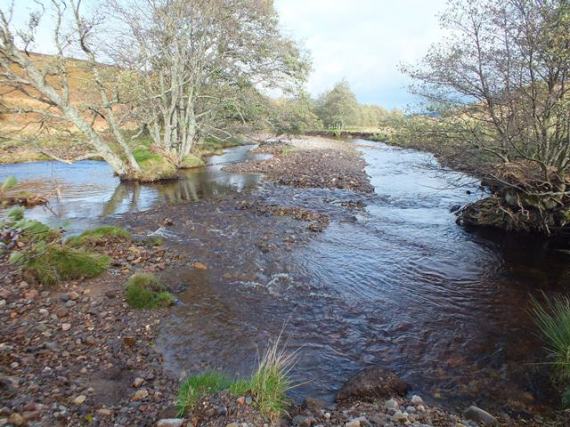
Typical nice varied habitat in the middle reaches of the Lochy.
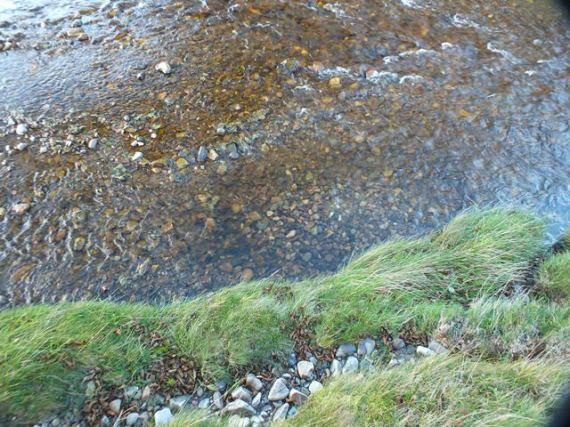
A large redd close to the bank
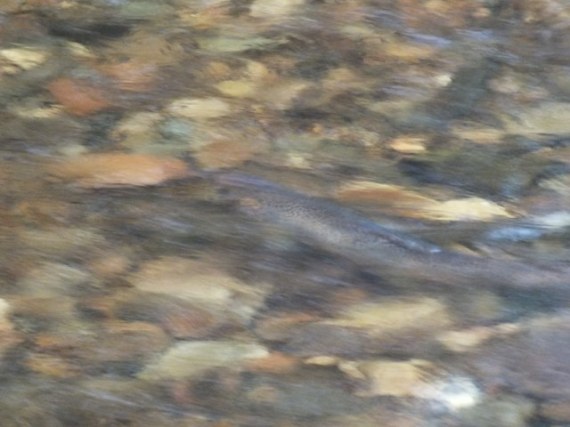
An “abstract” shot of a pair of spawning sea trout
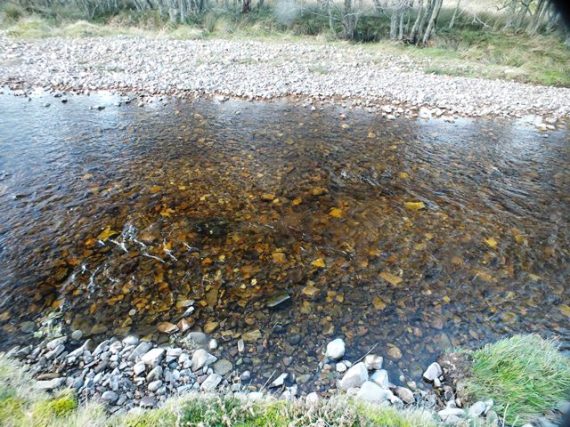
At least two large redds in this photo. There were a couple fish on the redds but I didn’t see them until it was too late but I thought they were salmon when they shot off downstream. On the way back downstream I approached the site cautiously and I am sure my initial assessment was right.
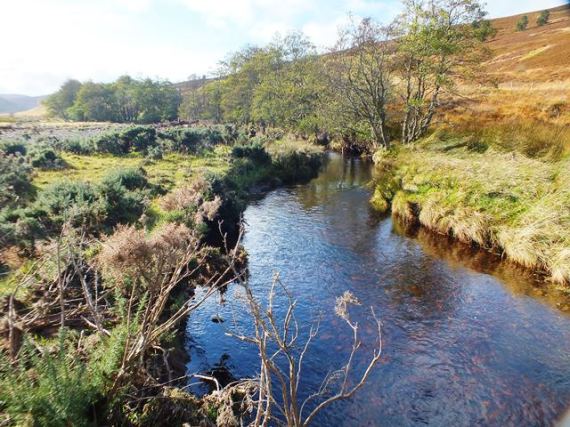
Much of the Lochy channel was quite mobile, flowing through large gravel beds but in this section the burn was flowing down what looked like what was until recently a back channel. A more stable channel which the fish obviously liked, there were quite a few present.
I didn’t count the redds in the Lochy itself but I was impressed, there must have been hundreds in the 2.8km stretch I walked.
I took a distinct fancy to the Allt Iomadaigh when we surveyed it a couple years ago so I was keen to explore a little more of it. We completed two electrofishing sites then, both of which supported good salmon and trout populations. As with the Lochy I spotted the first redd as soon as I approached the bank.
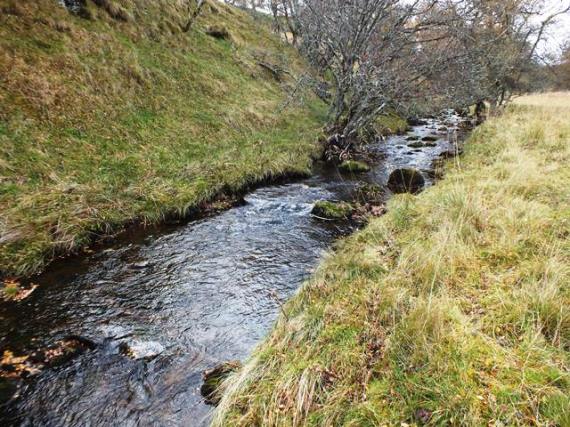
Lower, wooded section of the Iomadaigh. The burn is about 4m wide at this point and provides excellent habitat for wee fish.
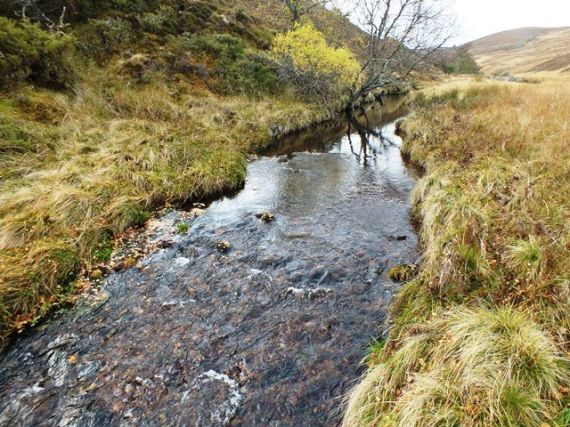
The Allt Iomadaigh a little further upstream. Our upper electrofishing site is located a short distance downstream of where this photo was taken. The tail of the pool looked a great site for spawning and fish agreed, there were at least three good sea trout redds.

Dead cock sea trout of about 2.5lb. There didn’t appear to be any predator marks on this particular casualty.
As I went further upstream I started finding more sea trout remains.
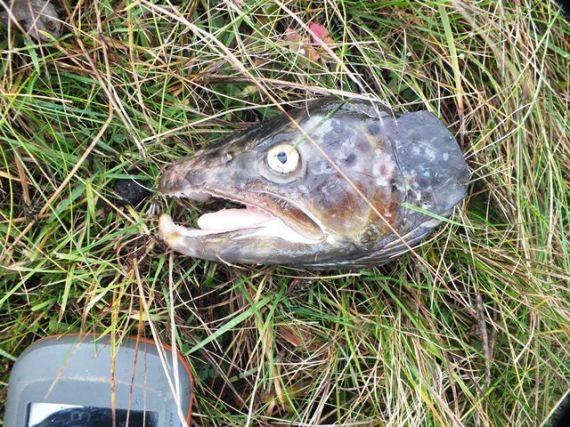
All that was left of a cock sea trout of about 4lb. The rest no doubt fed an otter
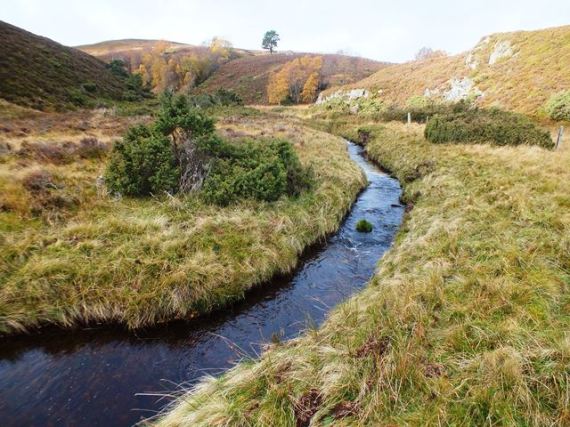
Upper middle reaches of the Iomadaigh. Not so suitable for spawning in this stretch but excellent parr habitat.
Just upstream of where the Allt Catanach joins the Iomadaigh there was a short section of great spawning gravel.

Sea trout redds in an area of tip top spawning gravels
Progressing upstream the surrounding terrain closed in to form a nice steep sided valley. The steeper, rocky ground, hinted that I would soon reach the limit of fish accessability so I wasn’t surprised that the second waterfall encountered looked impassable.
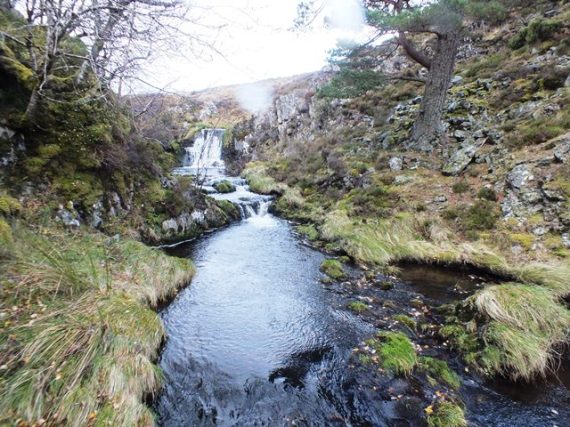
Impassable waterfall in the upper Allt Iomadaigh
I marked all the redds in the Allt Iomadiagh using the GPS and whilst I haven’t downloaded it yet I know that I started on waypoint 17 and ended on 63, although the last was the waterall location. Forty five or so redds in that wee burn was more than enough. I only saw one live adult fish, a cock sea trout, all the spawning activity in the Iomadaigh was over. Pity I hadn’t gone up there last weekend.
Spey Fishery Board
